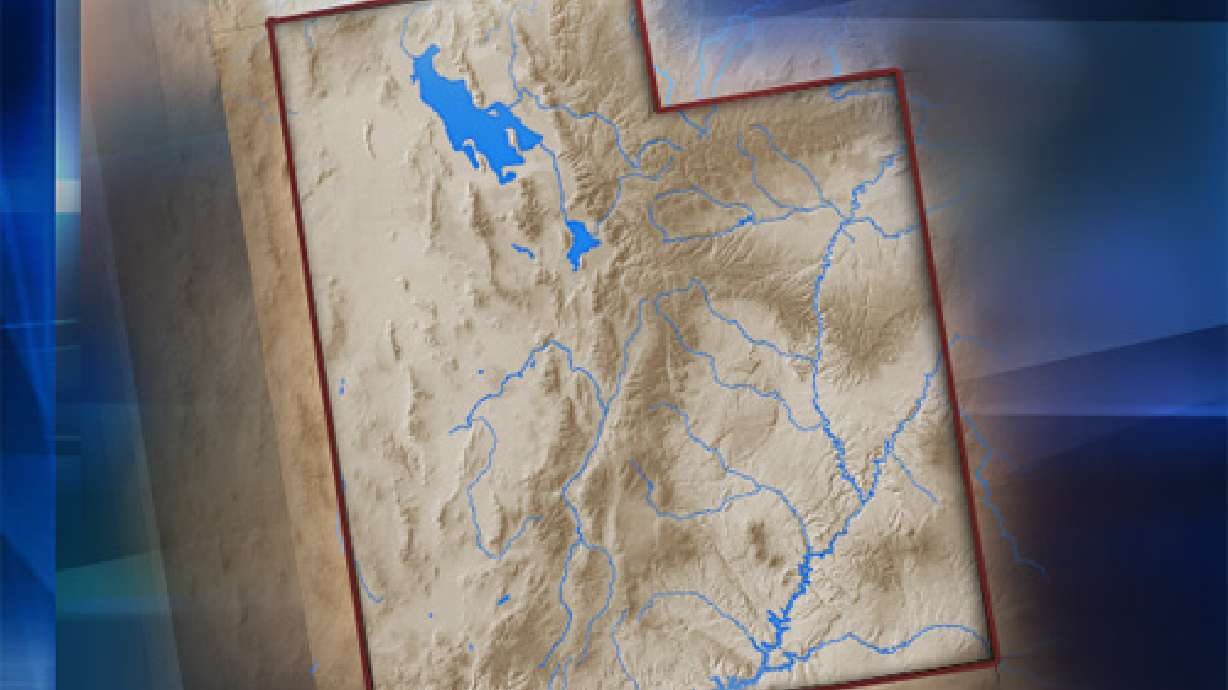Estimated read time: 4-5 minutes
This archived news story is available only for your personal, non-commercial use. Information in the story may be outdated or superseded by additional information. Reading or replaying the story in its archived form does not constitute a republication of the story.
SALT LAKE CITY (AP) -- An energy company received federal approval Thursday to open one of Utah's biggest natural gas fields by agreeing to use new technology to drill under wild areas, instead of on top of them.
The Bureau of Land Management's approval of Bill Barrett Corp.'s multi-billion-dollar project reflects a deal the drilling company made with environmental groups to pull back from wild areas and limit well pads off the high rim of the Green River's Desolation Canyon.
We think it's one of the most environmentally progressive natural gas projects.
–Duane Zavadil
That canyon, a National Historic Landmark inside one of the Lower 48's largest roadless areas, has seen little change since explorer John Wesley Powell remarked on "a region of wildest desolation" while boating the river in 1896. The area is populated by elk, deer and bighorn sheep, and bear maulings of river runners are not uncommon.
Along the river's western ramparts, Bill Barrett plans to use 120 well pads instead of the 538 it originally proposed, and it will drill directionally instead of straight down to get at the gas pockets deep beneath wild lands. It promised to hide wells into folds of the landscape and limit development activity during summer so rafters on the Green River can't spy the company's trucks or rigs from thousands of feet below.
The company also plans to drill fewer wells than planned -- 626 instead of 807 -- but still recover the full reserve from a region called the West Tavaputs Plateau.
"We think it's one of the most environmentally progressive natural gas projects," said Duane Zavadil, a vice president for Bill Barrett Corp.
Shares of the Denver-based company climbed $2.70, or 8.4 percent, to $34.81 in afternoon trading.
Interior Secretary Ken Salazar hailed the company's compromise and called the agreement historic.
"It clearly provides for the orderly and balanced development of our nation's energy supply while, at the same time, serving as an outstanding example of the fresh look of how we can better manage our energy resources," Salazar said in a written statement.
In one case, Bill Barrett dropped plans to develop wells around Jack Canyon, a tributary to the Green River, where the steep, rugged terrain is dotted with dense pinion and juniper trees and visited by a herd of wild horses. Jack Canyon is a candidate for wilderness protection, but because it has a well head that was drilled years ago, it was considered fair game for more development.
Now, Jack Canyon will be left untouched.
Utah BLM director Juan Palma called the settlement "a big deal" that came after years of environmental review and negotiation. The agency issued a final environmental study Thursday along with a decision to approve the project.
"This is a wonderful example of finding balance," Palma told The Associated Press on Thursday. "It's the kind of collaboration we need. It is not the environment against the economy. It's the environment and economy working together."
The Southern Utah Wilderness Alliance agreed not to challenge the agency's approval in federal court after the company stepped back from lands the group is proposing for wilderness designation by Congress.
Steve Bloch, a staff lawyer for the wilderness group, said the lands were as dramatic as Arizona's Grand Canyon.
"It's a remarkable, awe-inspiring landscape," Bloch said. "The compromise was hard fought, but we're pleased we found a partner in Bill Barrett Corp. to protect this special place."
Over 20 years or more, the company expects to wring 1 trillion cubic feet of gas from depths of about 8,000 feet and feed it into a national pipeline network.
That would provide 16 days of national supply, a significant amount for a gas field, said Jonathan Cogan, a spokesman for the U.S. Energy Information Administration. The U.S. has proven gas reserves of 245 trillion cubic feet.
Natural gas prices are depressed, but Bill Barrett believes it can still make money with the market benchmark at $4.60 per million BTUs. The EIA's long-term outlook is for prices to slowly climb to $8 per million BTUs, in today's dollars, by 2030.
"Right now, the market is awash in natural gas," said E. Russell Braziel, managing director at energy analysts Bentek Energy LLC in Denver. The firm expects that to be the case for at least five years, he said.
"Producers of natural gas in the U.S. have become much more efficient and can produce gas at prices much lower than anyone thought possible a few years ago," he said. "Because of that, a lot of gas is hitting the market, but demand is rising only slowly."
(Copyright 2010 by The Associated Press. All Rights Reserved.)








